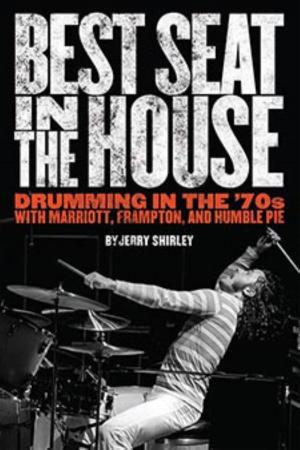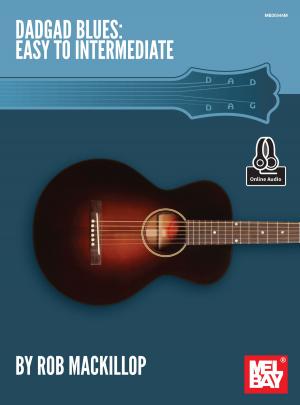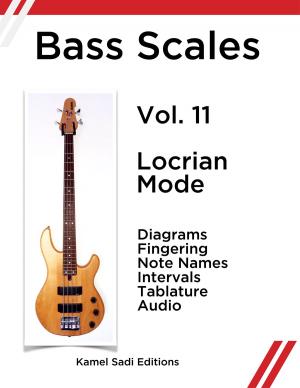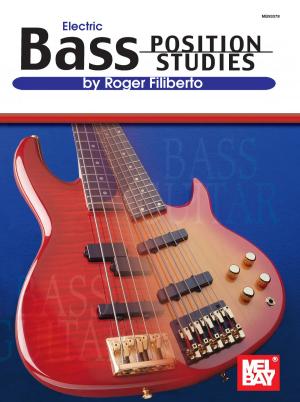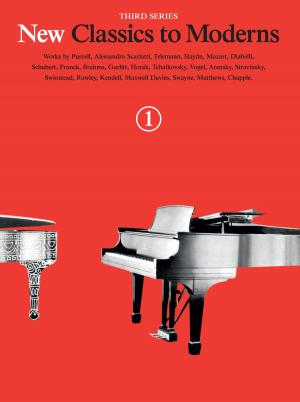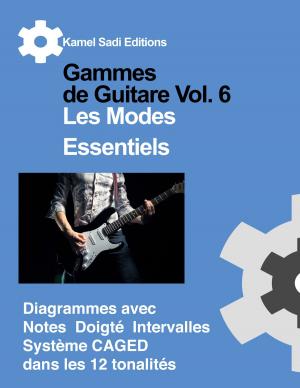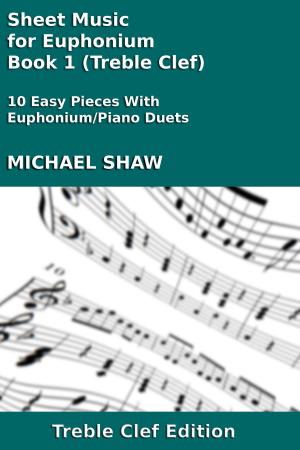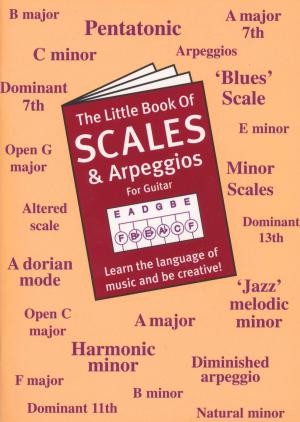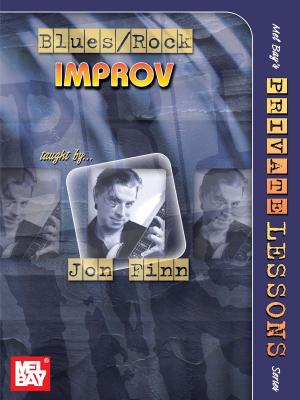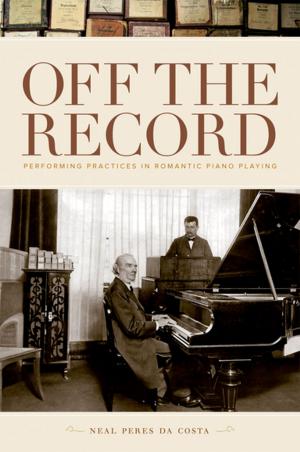The Hauslaib claviorgan in the Museu de la Música de Barcelona
Nonfiction, Entertainment, Music, Instruments & Instruction, General Instruments| Author: | Jaume Ayats i Abeyà | ISBN: | 9788499841946 |
| Publisher: | Documenta Universitaria | Publication: | December 15, 2009 |
| Imprint: | Language: | English |
| Author: | Jaume Ayats i Abeyà |
| ISBN: | 9788499841946 |
| Publisher: | Documenta Universitaria |
| Publication: | December 15, 2009 |
| Imprint: | |
| Language: | English |
Descripción larga (Inglés): The Lorenz Hauslaib claviorgan is one of the most unique and intriguing instruments in the rich collection of the Barcelona Museum of Music. This singular and ingenious object combines the mechanics of a small organ and a little spinet which can be played together, blending the two timbres, with both instruments housed within a tiny, luxurious cabinet.\nThis is one of the very few sixteenth-century claviorgans left in the world and it is very probably the only one which, 400 years after it was first built, is still in a condition to be played, producing a wonderfully captivating sound from the same materials that were used in the period when it was built. This achievement has been made possible thanks to a long process of research, study and restoration instigated by the Museum and the meticulous restoration work by both the organ-maker Joan Martí and the Gerhard Grenzing organ workshop.\nThis book brings together all the information and research produced by the teams responsible for recovering the sound of the claviorgan and is the first in a series of specialist publications by the Museum of Music, available in both hard-copy and electronic formats (which allows for the inclusion of audio-visuals showing the instrument being played). The aim is to disseminate the knowledge and research associated with the collections held by the Museum. At the end of the hard-copy book there is a code giving free access to the electronic version.\nThis book reflects the 50-year history of an institution that has spearheaded research into, and the restoration of, Catalan heritage in musical instruments. \n\nDescripción principal / Resumen (Catalán): El claviorgue de Lorenz Hauslaib és un dels instruments més singulars i sorprenents de la rica col·lecció del Museu de la Música de Barcelona. És un objecte peculiar i enginyós que reuneix les mecàniques d?un petit orgue i les d?una petita espineta que poden sonar alhora, mesclant els dos timbres, i que s?encabeixen dins d?un moble luxós de dimensions petites.\nÉs un dels poquíssims claviorgues del segle XVI que es conserven a tot el món, i molt probablement l?únic que, 400 anys després de la seva construcció, està en condicions de ser tocat obtenint, amb els materials de l?època, un resultat sonor magnífic i captivador. Això ha estat possible gràcies al llarg procés de recerca, d?estudi i de restauració impulsat pel Museu, i que ha tingut el privilegi de reunir la rigorosa tasca de recuperació realitzada pel constructor Joan Martí i pel taller d?orgueneria Gerhard Grenzing.\nAquest llibre reuneix les informacions i els estudis dels equips que han dut a terme la recuperació sonora, i inaugura les publicacions especialitzades del Museu de la Música, alhora en paper i en llibre electrònic (que permet incorporar audiovisuals amb interpretacions de l?instrument). L?objectiu és la difusió del coneixement i de les recerques al voltant dels fons de les col·leccions. Al final del llibre en paper, hi ha un codi per accedir gratuïtament al llibre electrònic.\nHeus aquí cinquanta anys de la trajectòria de la institució capdavantera en l?estudi i la recuperació del patrimoni català d?instruments musicals. \n\nDescripción larga (Español / Castellano): El claviórgano de Lorenz Hauslaib es uno de los instrumentos más singulares y sorprendentes de la rica colección del Museu de la Música de Barcelona. Es un objeto peculiar e ingenioso que reúne las mecánicas de un pequeño órgano y las de una pequeña espineta que pueden sonar al mismo tiempo, mezclando los dos timbres, y que caben dentro de un mueble lujoso de dimensiones pequeñas.\nEs uno de los poquísimos claviórganos del siglo XVI que se conservan en todo el mundo, y muy probablemente el único que, 400 años después de su construcción, está en condiciones de ser tocado consiguiendo, con los materiales de la época, un resultado sonoro magnífico y cautivador. Esto ha sido posible gracias al largo proceso de investigación, de estudio y de restauración impulsado por el Museu, y que ha tenido el privilegio de reunir la rigurosa tarea de recuperación realizada por el constructor Joan Martí y por el taller de organería Gerhard Grenzing.\nEste libro reúne las informaciones y los estudios de los equipos que han llevado a cabo la recuperación sonora, e inaugura las publicaciones especializadas del Museu de la Música, al mismo tiempo en papel y en libro electrónico (que permite incorporar audiovisuales con interpretaciones del instrumento). El objetivo es la difusión del conocimiento y de las investigaciones en torno a los fondos de las colecciones. Al final del libro en papel, se encuentra un código para acceder gratuitamente al libro electrónico.\nHe aquí cincuenta años de la trayectoria de la institución de vanguardia en el estudio y la recuperación del patrimonio catalán de instrumentos musicales. \n\n
Descripción larga (Inglés): The Lorenz Hauslaib claviorgan is one of the most unique and intriguing instruments in the rich collection of the Barcelona Museum of Music. This singular and ingenious object combines the mechanics of a small organ and a little spinet which can be played together, blending the two timbres, with both instruments housed within a tiny, luxurious cabinet.\nThis is one of the very few sixteenth-century claviorgans left in the world and it is very probably the only one which, 400 years after it was first built, is still in a condition to be played, producing a wonderfully captivating sound from the same materials that were used in the period when it was built. This achievement has been made possible thanks to a long process of research, study and restoration instigated by the Museum and the meticulous restoration work by both the organ-maker Joan Martí and the Gerhard Grenzing organ workshop.\nThis book brings together all the information and research produced by the teams responsible for recovering the sound of the claviorgan and is the first in a series of specialist publications by the Museum of Music, available in both hard-copy and electronic formats (which allows for the inclusion of audio-visuals showing the instrument being played). The aim is to disseminate the knowledge and research associated with the collections held by the Museum. At the end of the hard-copy book there is a code giving free access to the electronic version.\nThis book reflects the 50-year history of an institution that has spearheaded research into, and the restoration of, Catalan heritage in musical instruments. \n\nDescripción principal / Resumen (Catalán): El claviorgue de Lorenz Hauslaib és un dels instruments més singulars i sorprenents de la rica col·lecció del Museu de la Música de Barcelona. És un objecte peculiar i enginyós que reuneix les mecàniques d?un petit orgue i les d?una petita espineta que poden sonar alhora, mesclant els dos timbres, i que s?encabeixen dins d?un moble luxós de dimensions petites.\nÉs un dels poquíssims claviorgues del segle XVI que es conserven a tot el món, i molt probablement l?únic que, 400 anys després de la seva construcció, està en condicions de ser tocat obtenint, amb els materials de l?època, un resultat sonor magnífic i captivador. Això ha estat possible gràcies al llarg procés de recerca, d?estudi i de restauració impulsat pel Museu, i que ha tingut el privilegi de reunir la rigorosa tasca de recuperació realitzada pel constructor Joan Martí i pel taller d?orgueneria Gerhard Grenzing.\nAquest llibre reuneix les informacions i els estudis dels equips que han dut a terme la recuperació sonora, i inaugura les publicacions especialitzades del Museu de la Música, alhora en paper i en llibre electrònic (que permet incorporar audiovisuals amb interpretacions de l?instrument). L?objectiu és la difusió del coneixement i de les recerques al voltant dels fons de les col·leccions. Al final del llibre en paper, hi ha un codi per accedir gratuïtament al llibre electrònic.\nHeus aquí cinquanta anys de la trajectòria de la institució capdavantera en l?estudi i la recuperació del patrimoni català d?instruments musicals. \n\nDescripción larga (Español / Castellano): El claviórgano de Lorenz Hauslaib es uno de los instrumentos más singulares y sorprendentes de la rica colección del Museu de la Música de Barcelona. Es un objeto peculiar e ingenioso que reúne las mecánicas de un pequeño órgano y las de una pequeña espineta que pueden sonar al mismo tiempo, mezclando los dos timbres, y que caben dentro de un mueble lujoso de dimensiones pequeñas.\nEs uno de los poquísimos claviórganos del siglo XVI que se conservan en todo el mundo, y muy probablemente el único que, 400 años después de su construcción, está en condiciones de ser tocado consiguiendo, con los materiales de la época, un resultado sonoro magnífico y cautivador. Esto ha sido posible gracias al largo proceso de investigación, de estudio y de restauración impulsado por el Museu, y que ha tenido el privilegio de reunir la rigurosa tarea de recuperación realizada por el constructor Joan Martí y por el taller de organería Gerhard Grenzing.\nEste libro reúne las informaciones y los estudios de los equipos que han llevado a cabo la recuperación sonora, e inaugura las publicaciones especializadas del Museu de la Música, al mismo tiempo en papel y en libro electrónico (que permite incorporar audiovisuales con interpretaciones del instrumento). El objetivo es la difusión del conocimiento y de las investigaciones en torno a los fondos de las colecciones. Al final del libro en papel, se encuentra un código para acceder gratuitamente al libro electrónico.\nHe aquí cincuenta años de la trayectoria de la institución de vanguardia en el estudio y la recuperación del patrimonio catalán de instrumentos musicales. \n\n

